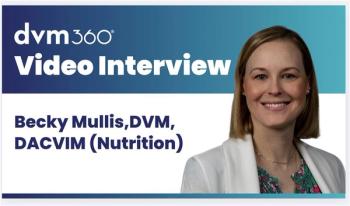
Investigating calf losses takes time
Go beyond asking questions to find definitive answers
As I stood looking at the weak, dehydrated calf, I felt both helpless and hopeless. This animal was going to die, just like several before it on this farm, and, in all probability, like many more to come.
I really did not know what was causing the problem, other than a vaguesense of "poor management". I had already questioned the ownerabout colostrum protocols, and they assured me they always got a good quantityof high-quality colostrum into calves shortly after birth.
Most of you have been in similar situations. It is not uncommon for somefarms to lose 20 percent of their baby calves, and I have seen it reach50 percent. Asking questions seldom produces much enlightenment. Do youjust give up, or do you wade in deeper? When I was in practice, I must admitI often simply gave up, especially if the owner seemed apathetic.
For the past two years, I have been deeply involved with raising dairyreplacements, including baby calves. I have frequently been in situationswhere we had to find the answers, and have learned how to get them. It certainlyrequires a lot more than just asking questions.
Start with colostrum
I am convinced that improper management of colostrum is the largest singlecause of young calf disease. Nothing original there. However, when I questionproducers, they swear they always get at least 2 quarts of high-qualitycolostrum into each calf within two hours of birth. Fortunately, we havea tool that can easily tell us if this is true. Serum total protein correlatesclosely to the quantity of antibodies absorbed after birth. It should bedone on calves 2 to 5 days old, before other factors can influence the level.Serum total protein should be at least 5.5 g/dl, and over 6.0 is betteryet.
If you consistently find levels under 5.0, then you can be sure calvesare either receiving inadequate amounts, or else they are receiving it toolong after birth. A final possibility is that the colostrum is simply ofpoor quality.
Once you are armed with your total protein results, you can confrontthe owner or manager with the evidence. In most cases, they are then willingto accept that changes must be made. When hired labor is responsible fornewborns, it often works best to train them to force feed one gallon ofcolostrum immediately after birth. That will almost always result in adequateantibody absorption.
Examine equipment
Of course there are other causes of death and disease in young calvesbesides inadequate colostrum. One of these is dirty equipment that is usedto collect, store or feed the colostrum, milk or milk replacer. Milk hosesand buckets used on fresh cows are often not cleaned as effectively as theequipment that handles saleable milk. Large populations of bacteria canbe present, and serve as a source of infection to the calf that is fed milkor colostrum for these sources. Sometimes the clue here is that the onsetof illness comes very soon after the first feeding. Whenever you are investigatingyoung calf disease, be sure to examine all hoses and buckets that are usedto handle colostrum, milk or milk replacer.
Maternity pens and neonatal housing
The environment into which the calf is born will have a huge impact onhealth. It seems pretty obvious that if the first thing the nose and mouthcontact is filth and manure, then the number of bacteria entering the bodywill be high. Subsequent disease is then inevitable. But we cannot knowthe condition of the calving pen by asking the owner or manager. We haveto check it ourselves, on more than one occasion.
All animals do best when their environment is clean, dry and comfortable.It needs to be well ventilated, yet free of drafts. These factors are especiallyimportant for neonates. Yet, we all know that many baby calves are keptunder very different conditions. To really evaluate the calf's environment,sit down next to it. If your eyes begin to burn from the ammonia, and yourbutt is soon wet from dampness, then you know what it is like for the animal.
Nutrition
Baby calves are very limited in their ability to digest grain, and forageis of almost no value to them. They need either milk or a high quality milkreplacer. The standard feeding rate of 0.5 pounds of replacer twice dailyis barely enough to maintain life, and will not do that in cold weather.Feeding at least 0.75 pounds twice daily will give a much better safetymargin, and allow for some growth as well. Calf starter should be offeredwithin the first few days of life, so that the calf can develop an appetitefor it, as well as the ability to digest it and use if for growth afterthe first couple of weeks.
Specific diseases
Even when all of the management factors listed above are sound, specificdiseases can still overwhelm the calf's immune system. Two common agentsare pathogenic Escherichia coli or Salmonella. Calves infected with theformer usually become ill at around 10 days to 2 weeks of age, often showingsudden collapse and death with little warning. It is often secondary toinfection with rota or corona viruses. Salmonellosis typically appears earlier,with a fever and bloody diarrhea. Submission of feces or a carcass to adiagnostic lab is needed to get an accurate diagnosis. Often it is helpfulto submit an animal in the early stages of the illness, prior to antibiotictherapy.
While young calf mortality can be challenging and at times depressing,we can usually find the cause and correct it if the owner is motivated todo so. However, it takes time.
A 10-minute conversation is usually not adequate. You need to budgettwo to three hours for collecting blood samples, examining colostrum andmilk handling equipment, evaluating the maternity pen and calf housing,plus reviewing nutrition. The owner must be willing to pay for this time,and also to make needed changes in management. If these factors are in place,then progress can be made.
Newsletter
From exam room tips to practice management insights, get trusted veterinary news delivered straight to your inbox—subscribe to dvm360.






